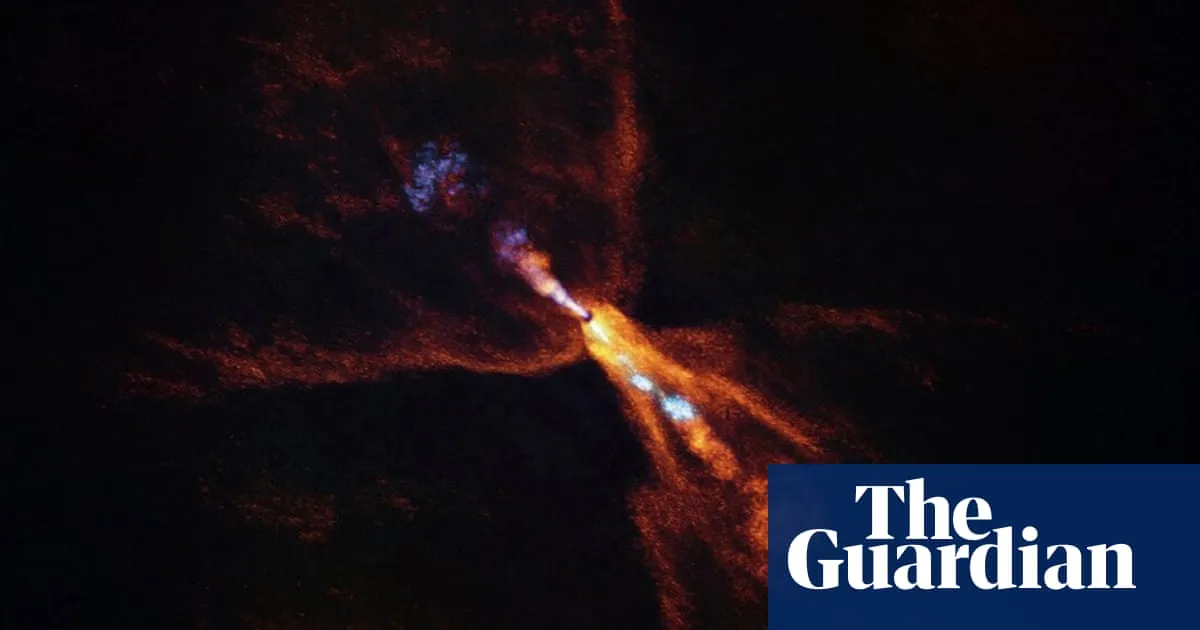
A team of astronomers has made a groundbreaking discovery, identifying the earliest seeds of rocky planets forming in the gas surrounding a young star that resembles our own sun. This finding provides a remarkable glimpse into the initial moments of our solar system's formation, often referred to as "time zero." The research was reported on Wednesday by Melissa McClure from Leiden Observatory in the Netherlands, who led the international team in this ambitious study.
“We’ve captured a direct glimpse of the hot region where rocky planets like Earth are born around young protostars,” McClure stated. This discovery marks a pivotal moment in our understanding of how planetary systems form. “For the first time, we can conclusively say that the first steps of planet formation are happening right now,” she added, highlighting the significance of this research.
Fred Ciesla from the University of Chicago, who was not involved in the study published in the journal Nature, emphasized the importance of these observations. “This is one of the things we’ve been waiting for. Astronomers have been contemplating how planetary systems form for a long time,” he noted, recognizing the rich opportunities this research presents for further exploration.
The collaboration between NASA’s Webb Space Telescope and the European Southern Observatory in Chile has unveiled these early signs of planetary formation around a young star known as Hops-315. This star, a yellow dwarf still in the making, is significantly younger than our sun, estimated to be between 100,000 and 200,000 years old and located about 1,370 light-years away from Earth.
In a cosmic first, McClure and her team focused on the gas disk surrounding Hops-315 and detected solid specks condensing, which are indicative of the early stages of planet formation. A gap in the outer part of the disk allowed astronomers to observe these processes more closely, aided by the star's tilt towards Earth. Their findings included the detection of silicon monoxide gas and crystalline silicate minerals, believed to be the fundamental building blocks for solid materials that formed in our solar system over 4.5 billion years ago.
The observed activity is taking place in a region analogous to the asteroid belt between Mars and Jupiter, where the residual building blocks of our solar system's planets reside. McClure remarked that the condensation of hot minerals had never been observed around other young stars, leading researchers to question whether this phenomenon is a universal feature of planet formation or a unique characteristic of our solar system. “Our study shows that it could be a common process during the earliest stage of planet formation,” she explained.
Previous research had focused on younger gas disks or more mature disks with potential planets, but concrete evidence of the onset of planet formation had not been established until now, according to McClure. A stunning image captured by the European Southern Observatory’s ALMA telescope network depicts the emerging planetary system, resembling a glowing lightning bug against the dark void of space.
While it remains uncertain how many planets might eventually form around Hops-315, McClure suggests that with a gas disk comparable in size to that of our sun, it could potentially host a system with eight planets or more in a million years. Merel van ’t Hoff from Purdue University, a co-author of the study, expressed enthusiasm about the potential for discovering more nascent planetary systems. “By casting a wider net, astronomers can look for similarities and determine which processes might be crucial to forming Earth-like worlds,” she stated.
As we continue to explore these early stages of planet formation, questions remain: “Are there Earth-like planets out there, or are we so special that we might not expect such occurrences to be common?” This groundbreaking research opens new avenues for understanding our place in the universe and the processes that govern the formation of planetary systems.